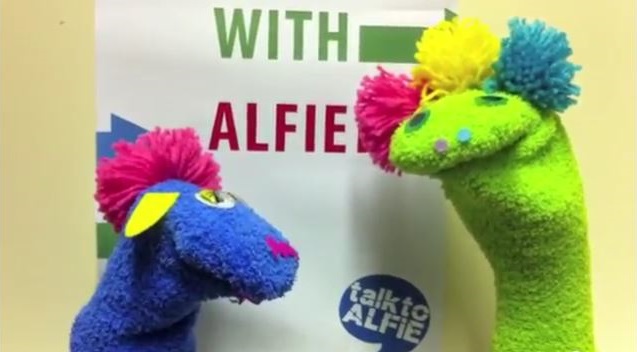Involving ‘seldom heard’ groups in HIV research
By Annabelle South on behalf of the Medical Research Council Clinical Trials Unit (MRC CTU) at University College London (UCL) Patient and Public Involvement (PPI) group*
There is a long-standing tradition of actively involving patients in HIV research. However, there are some groups of people affected by HIV who have not been actively involved. This article explores the experiences of two studies by the Medical Research Council Clinical Trials Unit at University College London (UCL) that have tried to address this.
Ask ALFIE
Adolescents and Adults Living with Perinatal HIV (AALPHI) is a study that follows a group of young people (aged 13-23) who were either infected with HIV when they were babies, or are HIV-negative and live with someone who is HIV-infected. This group is particularly hard to involve because of their age and the intense stigma around HIV. From the outset the study team worked with voluntary organisations that support young people with HIV to:
- pilot the interview with young people
- get young people to comment on the patient information sheet.
A group of HIV-infected young people rebranded the study as ‘ALFIE’, designing the logo and poster, and making a sock puppet video about the study. A young person is also on the study steering committee, and attends meetings with a mentor, meeting the chair beforehand to discuss how they want to contribute.
What difference has this made?
The input of young people made sure the questions and tests were acceptable and the study materials were appealing and understandable. Voluntary organisations have helped to promote the study to young people.
Lessons learnt
- Involvement has to start at the design stage to ensure acceptability
- Young people are a transient group, so involving a group rather than one or two individuals can provide stability while allowing for change
- Involving voluntary organisations that support young people affected by HIV is key – they have acted as a bridge between researchers and young people
- Involvement of young people must be on their terms, using the right language and avoiding tokenism
- Offer support and training to young people who are involved, and prepare them for any meetings.
PROUD
PROUD is an HIV prevention study for gay men at high risk of HIV. It is investigating what impact taking a drug called Truvada (which can reduce the risk of HIV infection) has on gay men’s sexual and risk behaviour, as well as HIV and sexually transmitted infections (STIs). This approach is called pre-exposure prophylaxis (PrEP) – taking a drug before exposure to the virus, to reduce the chance of becoming infected if exposed to it. This group has not traditionally been involved in research as they are not ‘patients’, and there is some stigma in the gay community around the use of PrEP. The researchers have involved the community in a variety of ways:
- The Community Engagement Group was formed at an early stage, and consists of voluntary organisations that support people living with HIV, and represent gay men and other men who have sex with men, and transsexual women. It advises the trial team on recruitment, communication, media activities and patient and public involvement (PPI) strategies.
- The Trial Steering Committee has three community representatives, one of whom is the joint chair.
- The Independent Data Monitoring Committee has a community representative as a member.
- Participant involvement meetings have been held (via teleconferences and face-to-face meetings) to get the views of some trial participants on study procedures and future trial priorities. These meetings were facilitated by community representatives, and were advertised by clinics and on the study website.
What difference has this made?
The Community Engagement Group helped to shape the whole trial from a very early stage. They provided advice about the acceptability of the study design and also advised on a change in the eligibility criteria.
Recruitment to the trial was initially slower than expected. The Community Engagement Group met to discuss this, and as a result HIV charities released a joint statement outlining their position on PrEP. This resulted in considerable media coverage. The Terrence Higgins Trust also used GRINDR (a gay social networking app) to raise awareness of PrEP. This boosted recruitment.
Participant involvement meetings have helped to inform the development of a larger trial application, changes to the data collection tools, new recruitment materials, and identify the need for additional participant support such as social media platforms.
Lessons learnt
- Understanding your target audience is crucial for prevention trials
- Involve as many people as possible as early as possible, and keep the involvement dynamic
- Talking to participants and community groups may help to identify why there are problems with recruitment or retention, and how they may be addressed
- Community groups often have better channels of communication with potential participants than researchers do
- Researchers need to be politically aware, especially if they are doing research in an area that is potentially contentious
- Participants are keen to be involved and are well positioned to advise on ways to improve study conduct and help prioritise future research.
Conclusions
There is no ‘one size fits all’ way to involve ‘seldom heard’ groups. Study teams must consider the needs and preferences of their target groups, and design the involvement approach around that. Doing so can result in involvement that has a real impact on the research.
Further information
* With thanks to those involved in patient and public involvement for the AALPHI and PROUD studies.
To find out more about patient and public involvement in the MRC CTU at UCL, visit www.ctu.mrc.ac.uk/our_research/patient_and_public_involvement/
Contact: Annabelle South, Policy, Communications and Research Impact Coordinator, MRC CTU at UCL
Email mrcctu.ppigroup.mailman@ucl.ac.uk
Tel: 020 767 04827





